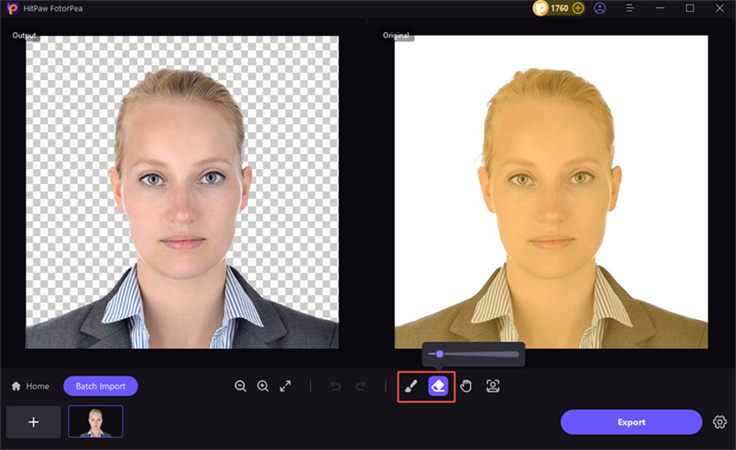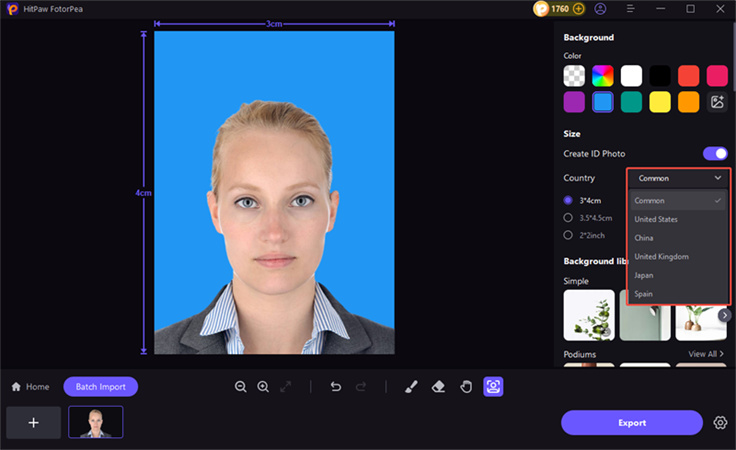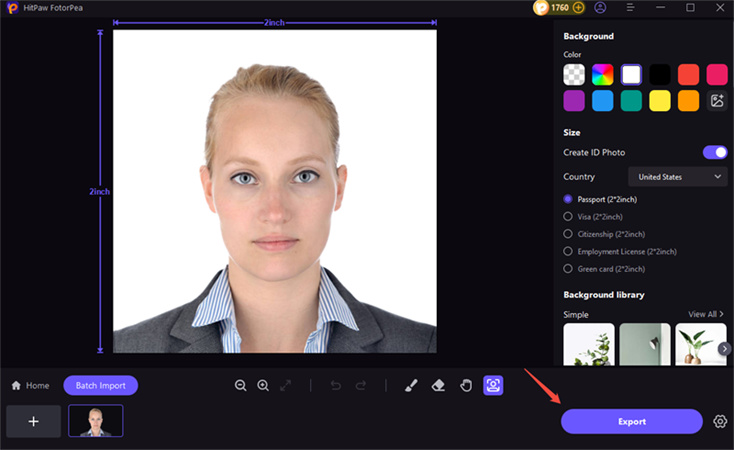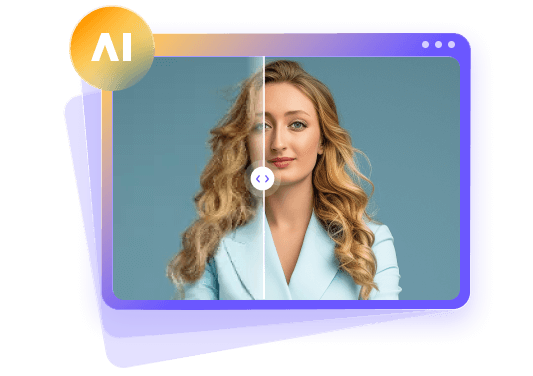AI Forged Documents: Legal Risks and Safe Practices
The rise of artificial intelligence has brought about significant advancements in various fields, but it has also introduced new challenges, particularly in the realm of digital identity and security. Fake passports to synthetic ID cards, AI-generated forgeries commonly known as deepfakes, have become a tool for cross-border crimes such as identity theft, financial fraud, and illegal immigration. These sophisticated forgeries pose serious threats to national security and individual privacy. This article delves into real-world cases, legal perspectives, international challenges, and offers guidance on the responsible use of AI image enhancement tools like HitPaw FotorPea.
Part 1: Cases for Cross-Border Crime Involving AI-Forged IDs
In late 2023, European border control authorities uncovered a transnational crime network using AI-generated passports and residence permits to facilitate illegal immigration into the Schengen Area. The forged documents were shockingly realistic-complete with holograms, watermarks, and biometric-style headshots generated by AI tools capable of mimicking official photo standards.
The investigation began after a suspiciously pristine passport triggered a red flag during an airport scan in Frankfurt. Forensic analysis revealed the passport photo was synthetically generated using deepfake algorithms. What followed was a joint operation involving Europol, French cybercrime units, and law enforcement agencies in North Africa. Dozens of fake documents were traced to a single source: a darknet vendor selling AI-generated IDs for as little as €300.

The network was eventually dismantled, but the case exposed just how easily AI tools-often marketed for harmless image enhancement-can be misused. It also revealed the growing difficulty in distinguishing between legitimate and forged documents, especially when traditional document scanners and border agents are not trained to spot signs of digital manipulation.
This incident underscores the necessity for robust legal frameworks to address the misuse of AI in document forgery and the challenges law enforcement faces in detecting such sophisticated forgeries.
Part 2: What Makes AI-Generated ID Forgery a Crime?
AI-generated document forgery may appear novel, but legally, it falls under long-established categories of fraud and identity crime. The difference now is the sophistication and scalability introduced by artificial intelligence, which blurs the line between digital creativity and criminal intent.
1. What the Law Says about AI-Generated Content
In most jurisdictions, creating or using fake identity documents-regardless of the tool used-is a criminal offense. For example:
- United States: Under 18 U.S. Code 1028, producing, possessing, or using false identification documents is punishable by up to 15 years in prison, especially if used in connection with terrorism, immigration fraud, or financial crime.
- European Union: The EU's Artificial Intelligence Act requires transparency for AI-generated content. If AI is used to create fake IDs without proper disclosure-or with fraudulent intent-it violates both the AI Act and criminal fraud laws in member states.
- United Kingdom: Forging government-issued identification is criminalized under the Identity Documents Act 2010. There is no exemption for AI-generated fakes.
- Asia-Pacific: In countries like Singapore and Australia, cybercrime laws have been expanded to cover the use of AI in falsifying documents or personal information.
Even if the forged image or document is never used, intent to deceive can be enough for prosecution in many legal systems.
2. The Role of AI in "Aggravated" Forgery
What makes AI-generated ID forgery particularly dangerous-and potentially subject to harsher penalties - is its ability to automate deception. When a synthetic image is indistinguishable from a real one, and is created with the intent to bypass digital security systems (like biometric verification or KYC checks), the act is often treated as aggravated fraud or cyber-enabled identity theft.
Moreover, many AI tools don't explicitly prohibit illegal use, creating a legal gray area for casual users who may not realize the extent of their liability.
3. When Does Image Editing Become a Crime?
Not all AI-assisted editing is illegal. Enhancing a photo for clarity, resizing images for documents, or restoring old ID photos is perfectly legal - as long as the image remains truthful. But when someone:
- Alters personal information (like a name or DOB),
- Pastes new faces onto ID photos,
- Generates fictional government seals or barcodes
…they cross into the realm of criminal forgery, whether AI is used or not.
As legal systems scramble to catch up with technology, users and developers of AI image tools must remain aware of their legal responsibilities-ignorance is no defense under the law.
Part 3: Challenges for Cross-Border Enforcement & Jurisdiction
The global nature of the internet complicates the enforcement of laws against AI-generated document forgery. Perpetrators can operate from jurisdictions with lax regulations, making it difficult for authorities to pursue legal action. International cooperation is essential to combat this issue. Organizations like Interpol and Europol are working to facilitate cross-border collaboration, but challenges remain in harmonizing laws and sharing information across borders.
For example, while the European Union has enacted the AI Act to regulate AI-generated content, other regions may not have similar legislation, creating enforcement disparities. This inconsistency can be exploited by criminals, highlighting the need for global standards and cooperation in addressing AI-related crimes.
Part 4: How to Avoid Misuse & Compliance When Using AI Image Tools
While AI image enhancement tools like HitPaw FotorPea offer legitimate benefits, such as restoring old photographs or enhancing image quality for creative projects, they can also be misused. To ensure compliance with legal standards, users should adhere to the following guidelines:
- Obtain Consent: Always ensure you have explicit permission to use and modify images of individuals.
- Avoid Creating Fake IDs: Do not use AI tools to generate or alter identification documents.
- Label AI-Generated Content: Clearly indicate when content has been created or modified using AI to maintain transparency.
- Respect Privacy Rights: Do not use AI tools to infringe upon an individual's privacy or create misleading representations.
By following these guidelines, users can responsibly utilize AI image enhancement tools without violating legal standards.
If you are wondering for how to make a standard ID photo for passport or visa, you may find it difficult to make the right size and background color. But with HitPaw FotorPea, you can make it in very simple steps.
How to Make ID Photo with HitPaw FotorPea Safety and Legality
Step 1: Activate to Upload Your Photo
Launch the program, hit the Toolbox tab, and click the ID Photo feature to import your photo.

Step 2: Adjust the Selection using Tools
Then AI will automatically remove your photo background. If you want to refine some details, find the Brush or Erase Selection tool at the bottom of the program.

Step 3: Choose the Size and Country for ID Photo
Next, enable the Size button and select the country you are in. Here list of some common sample sizes for different countries, including the United States, the United Kingdom, Japan, and Spain.

Step 4: Export Your ID Photo
After choosing the background color and frame size, you could scale up or down the original photo within the frame to make it fit. If the effect is satisfactory, click "Export" and save the final ID photo to your computer.

(*Final Reminder: This guide is for informational purposes only and does not constitute legal advice. Before using the relevant features, please make sure to:
① Consult a qualified legal professional in your jurisdiction to evaluate any legal risks that may apply;
② Carefully read and fully understand the HitPaw Term of Service and HitPaw Privacy Policy;
③ Ensure that all generated content complies with applicable local, state, and federal laws and regulations, particularly those related to synthetic media and deepfake technologies.)
FAQ: FAQs About AI-Generated Document Forgery
Q1. Is it illegal to use AI to edit or enhance ID photos?
A1. Yes, if the intent is to deceive or commit fraud. Editing ID photos for legitimate purposes, such as restoring old images, is generally acceptable, but creating fake IDs is illegal.
Q2. How can authorities detect AI-generated forged documents?
A2. Through forensic analysis, metadata inspection, and advanced detection tools designed to identify inconsistencies typical of AI-generated content.
Q3. Can AI image tools like HitPaw be used safely?
A3. Yes, when used for legal and ethical purposes, such as enhancing images for creative projects or restoring old photographs.
Conclusion: Enhance Responsibly, Not Illegally
AI technologies have the potential to revolutionize various industries, but their misuse can lead to serious legal consequences. Understanding the legal implications of AI-generated content and adhering to ethical guidelines is crucial. Tools like HitPaw FotorPea can be used responsibly for legitimate purposes, such as enhancing images for creative projects. By using these tools within legal boundaries, individuals can harness the power of AI without falling into the trap of illegal activities.










 HitPaw Univd (Video Converter)
HitPaw Univd (Video Converter) HitPaw VoicePea
HitPaw VoicePea  HitPaw VikPea (Video Enhancer)
HitPaw VikPea (Video Enhancer)



Share this article:
Select the product rating:
Daniel Walker
Editor-in-Chief
This post was written by Editor Daniel Walker whose passion lies in bridging the gap between cutting-edge technology and everyday creativity. The content he created inspires the audience to embrace digital tools confidently.
View all ArticlesLeave a Comment
Create your review for HitPaw articles